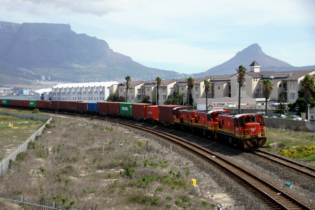The cash in transit industry has evolved over a period of time, taking into consideration safety and security measures surrounding the risks involved in transporting cash.
Following a serious incident in 2006, SBV took a conscious decision to undergo a complete change in strategy.All 131 hi-ace vehicles in its fleet were replaced within a year in order to further intensify vehicle safety for employees when transporting cash. Over the years, SBV has not only grown its fleet of cash in transit vehicles, but has also significantly enhanced technology to ensure greater security when transporting cash and protecting its people within the vehicles. “We have implemented the latest security features such as biometric readers and one time codes to help combat against heists,” says Chris Ras, general manager of Risk & Compliance. As criminals develop more sophisticated ways in committing cash heists, companies have become aware of the continuous need to improve and increase technology features in vehicles transporting cash. SBV, in its ongoing effort to manage the risks involved in transporting cash, has continued to implement technologies within its vehicles to curb heists. The history of vehicles through the ages for SBV has been an interesting journey .In 1995, SBV used partially armoured vehicles and then started to develop fully armoured vehicles in the late 1990s. In 2002, SBV introduced 61 fully armoured 616 Sprinter vehicles to its fleet. This development kick-started the replacement of the SBV fleet and in 2004,the armoured bulk cash carrier and Cash in Transit delivery vehicles were introduced. This project received the Armscor Chairman’s Award in 2004.This fleet of vehicles includes the Nissan UD290 – also called the ‘Terrible’. The truck’s design was completed in just over four months by four engineers and took 4 780 man hours to completely build the prototype vehicle, of which 1 080 hours were dedicated to finishing 2.94 t of steel. This steel was cut and the laser travelled at 892 m to create the vehicle’s steel components.
The ‘Big brother’ of the fleet is the Eliminator (built on a Hyno 234 chassis), which weighs 9 t in total. Efficiencies in the utilisation of Gross Vehicle Mass are critical in order to maintain armoured vehicles in a good running condition for longer periods. SBV only utilises 8 900 kg of the payload, allowing for a 34% spare capacity. Due to the correct utilisation of the Gross Vehicle Mass, the life expectancy of SBV’s Eliminator is estimated to be seven or more years. The fourth generation armoured range built on an Isuzu NPR400 chassis was introduced in 2010 and the manufacturer received the SABS Design Excellence Award for 2010. Ras continues: “All vehicle types are approved by the SABS. Technology has advanced significantly to ensure the security of the cash that is carried within the vehicles [by using] Biometric readers, ensuring that security risks to individuals are limited.” The success of SBV’s operations over the years has been attributed to the interweaving of various elements, one of which is the perpetual application of state-of-the-art technology, as well as the development of vehicles that ensure that its services incorporate high security standards for both employees and operations. SBV, with its expertise in the cash management industry, has a responsibility to the industry and the community to ensure that their employees have peace of mind, that the assets transported in their vehicles are transported in a secure manner and that no risks are presented to the community – this has been SBV’s core objective over the years.






